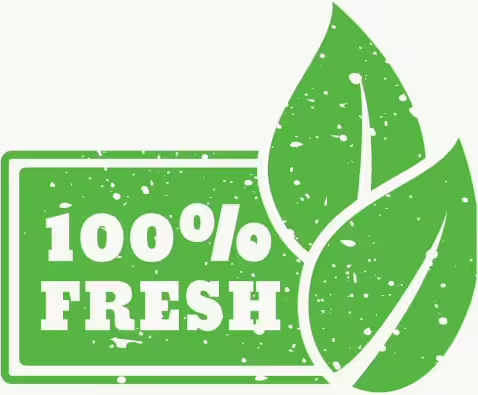Grilling is a quintessential part of outdoor living, perfect for gatherings and family meals. Choosing the right grill can elevate your cooking experience, but with so many options available, finding the best outdoor grill can be daunting.
This guide will help you understand how to find the best outdoor grills by focusing on key factors such as fuel type, size, features, and budget.
Choosing the Right Fuel Type
Gas Grills
Gas grills are popular for their convenience and ease of use. They heat up quickly, offer precise temperature control, and are easy to clean.
- Advantages: Quick ignition, consistent heat, adjustable flame, and minimal cleanup.
- Disadvantages: Require a propane tank or natural gas line, which may limit portability.
Charcoal Grills
Charcoal grills are favored for their ability to impart a smoky flavor to food. They require more time and effort to set up and clean but offer a traditional grilling experience.
- Advantages: Rich, smoky flavor, high heat for searing, and often more affordable.
- Disadvantages: Longer setup and cleanup time, less precise temperature control, and ongoing cost of charcoal.
Pellet Grills
Pellet grills use wood pellets as fuel, combining the convenience of gas grills with the flavor of charcoal grills. They are versatile and can be used for smoking, grilling, and even baking.
- Advantages: Excellent flavor, versatile cooking options, and convenient temperature control.
- Disadvantages: Higher initial cost, requires electricity, and ongoing cost of pellets.
Electric Grills
Electric grills are ideal for those with limited outdoor space or restrictions on open flames. They are easy to use and clean but may lack the traditional grill flavor.
- Advantages: Easy setup, minimal maintenance, and safe for indoor or balcony use.
- Disadvantages: Limited flavor compared to charcoal or pellet grills, requires an electrical outlet.
Determining the Right Size
Cooking Area
The cooking area is an essential factor in choosing a grill. It determines how much food you can cook at once.
- Small Grills: Ideal for singles, couples, or small families, with a cooking area of up to 300 square inches.
- Medium Grills: Suitable for families and small gatherings, with a cooking area between 300 and 600 square inches.
- Large Grills: Perfect for entertaining larger groups, with a cooking area over 600 square inches.
Number of Burners
For gas grills, the number of burners impacts the cooking flexibility and heat distribution.
- Two Burners: Adequate for small to medium grilling tasks.
- Three to Four Burners: Provide more cooking space and temperature control for medium to large grills.
- Five or More Burners: Ideal for large grills, offering the most versatility and cooking space.
Evaluating Grill Features
Heat Output
Heat output is measured in BTUs (British Thermal Units). A higher BTU rating generally means more cooking power, but it should be balanced with the grill size.
- Small Grills: Look for 10,000 to 20,000 BTUs.
- Medium Grills: Aim for 20,000 to 40,000 BTUs.
- Large Grills: Consider 40,000 BTUs or more.
Construction and Durability
The construction material affects the grill’s durability and heat retention.
- Stainless Steel: Durable, rust-resistant, and easy to clean. Look for high-quality stainless steel to ensure longevity.
- Cast Iron: Excellent heat retention and even cooking. Often coated with porcelain for easier maintenance.
- Porcelain-Coated Steel: Resists rust and is easier to clean but may chip over time.
Additional Features
Consider additional features that enhance convenience and cooking options:
- Side Burners: Great for cooking side dishes or sauces while grilling.
- Infrared Burners: Provide intense heat for searing and faster cooking times.
- Rotisserie Kits: Perfect for slow-cooking roasts and whole poultry.
- Temperature Gauges: Built-in gauges help monitor cooking temperatures without opening the lid.
- Warming Racks: Keep cooked food warm while you finish grilling other items.
- Storage and Shelving: Extra storage space for utensils, condiments, and other grilling essentials.
Budget Considerations
Entry-Level Grills
- Price Range: $100 to $300
- Features: Basic models with fewer burners and limited features. Suitable for occasional grilling and small gatherings.
Mid-Range Grills
- Price Range: $300 to $700
- Features: More burners, better construction, and additional features like side burners and temperature gauges. Ideal for regular grilling and medium-sized groups.
High-End Grills
- Price Range: $700 and up
- Features: Premium materials, multiple burners, advanced features, and larger cooking areas. Perfect for grilling enthusiasts and frequent entertainers.
Finding the best outdoor grill involves considering the fuel type, size, features, and budget that suit your needs. Gas grills offer convenience and ease of use, while charcoal grills provide rich, smoky flavor. Pellet and electric grills offer versatility for different cooking styles and environments.
By determining the right size, evaluating key features, and considering your budget, you can select the perfect grill to enhance your outdoor cooking experience. Investing in a high-quality grill will provide you with years of enjoyable grilling and delicious meals.
